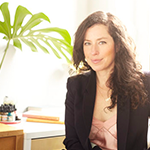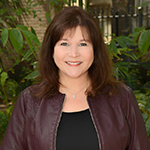Some writers I speak to have this dream: that they will release their books, and something magical will happen. People will find it. People will read it. People will review it and tell their friend about it. A wave of interest takes hold, and before they know it, they have a dedicated readership.
That dream is not often the reality.
Does it happen? Yep. It actually does happen. But not nearly as often as we would like to think.
When it does happen, what is often hidden is all of the behind-the-scenes hard work that the author did to connect the book with readers. Today I want to share three inspiring examples of authors and artists who did just that. Who moved their careers forward by not waiting for the world to discover them, but to instead take actions to forge meaningful connections with those who would love their work.
Are you worried there is some complicated system? Well, there isn’t. I can actually boil their advice down to one word:
ASK.
That’s it. If you want the world to discover your work, your talent, your vision, don’t wait for people to magically discover you. Reach out to them. Ask.
But asking is super difficult, right? It means we have to engage with other human beings. It means they could say ‘no.’ It means we could be rejected. Judged. Laughed at.
Well, today I can’t wait to share the inspiring stories of Meera, Samantha, and Cathey. Three women who didn’t wait for the world to discover their writing and art, but who ensured that their voice was heard.
Meera Lee Patel on Asking
 Meera Lee Patel is an author and illustrator whose creative work is her full-time job. I had interviewed her back in April, and we did a second interview a few weeks back. What jumped out at me in our conversation was this statement:
Meera Lee Patel is an author and illustrator whose creative work is her full-time job. I had interviewed her back in April, and we did a second interview a few weeks back. What jumped out at me in our conversation was this statement:
“I did a talk a couple months ago in New York, and we were talking about rejection. They asked the panel, “When is the last time you got rejected.” I said, “I get rejected every day.” Somebody kind of laughed and was like, “Are you cold calling people, why are you getting rejected so often?” I said, “Oh yeah, I’m cold calling people. I’m seeking people out and saying, ‘I like the work you make and I want to make it with you.’ I don’t see that as a bad thing.”
This scenario really jumped out at me. How Meera confronted the notion that you don’t just silently wait for people to discover your work. I loved how she reframed cold-calling: not as a ruthless pitch, but as a mutual collaboration. She goes on to explain that the perception of her success and the reality of her process differ:
“I do know that people look at me and they are like, ‘I would like to be where you are,’ and people do not come to me, even now. Any work I’ve gotten has been from me reaching and saying, ‘Hey, can I do this with you.”
“I don’t have anybody emailing me asking me to do things for them. I reach out constantly. I used to reach out to just anybody, because I was like, ‘I just need work, and I need to pay the bills.”
“I’m lucky enough that I get to be a little choosier now. I’m like, ‘What are my dream companies? Where does my work fit in? Do I believe in them and their products? Is my work ready.”
“Then I reach out to them. But nobody emails me back, ever.”
“I pitch myself so often, where I forget to where I reach out to, so it’s nice because I get to forgo that feeling of rejection. When I get rejected from somebody, and I feel really bummed about it, I have a rule, that for every rejection that I feel down about, I have to reach out to three more companies or people. That action of forging ahead anyway makes me feel like I am doing something to change the current state that I’m in. So that action changes my attitude, and I always feel better knowing that I already tried again.”
“For every 10 people I reach out to, I probably get three responses, and usually all three are rejections. But sometimes one is positive and two are rejections. Or two are rejections and one is ‘not right now, but try again in a year.’ So the acceptance rate is very very low. And I think that is across the board for most people, unless they are highly coveted, just because there are so many artists out there, and there is so much amazing work, that I don’t think companies and brands could possibly hire everybody. I don’t take it personally anymore, but it took awhile to get there.” What’s amazing to me is even with all of this rejection, this is the work it takes to create a full-time career as an artist. This process actually works!”
Meera’s experience is a cold dose of reality that cuts both ways. YES this is difficult work. But also: YES this work actually pays off.
I think too many writers and artists spend too much time scouring the web for shortcuts. For hacks that make it easy to find the secret button in Amazon that will magically sell more books.
But the real tools are the ones we are all born with: our ability to forge meaningful connections with like-minded people.
You can listen to my full interview with Meera here.
Samantha Hahn on Asking
 I first interviewed author, illustrator and art director Samantha Hahn back in 2015, and a few weeks ago we sat down for another interview.
I first interviewed author, illustrator and art director Samantha Hahn back in 2015, and a few weeks ago we sat down for another interview.
I knew that she was in the middle of a big creative shift. After years of being a full-time illustrator and author, she wanted to expand her career to include art direction. She and I had coffee back in 2017 and she told me how she was breaking into the field. I was just astounded by her bravery and gumption. How she was making contacts, getting work, and learning the skills.
How did she get her first clients as an art director? She didn’t respond to job listings — instead, she did this:
“I reached out to brands who were starting out, or brands who had a really amazing product that I loved, but I could see how to elevate their presentation. That was my initial point of entry: reaching out to brands whose products I thought was good, and whose products I would be excited to showcase in my own portfolio, or elevate in their own marketing materials, and reach out to them and make a pitch about how to do a photo shoot to them.”
When she first asked a friend for advice on where to begin as an art director, her friend replied, “There is no money in it, but everyone starts with photo shoots for editorial, meaning magazines or websites.”
Even knowing there was no money, Samantha jumped in head first:
“It’s a chance to collaborate with a group of creative people whose work you like.” “That was my first light bulb moment. I can figure out how to do a photo shoot. That’s how I started, by assembling people I wanted to work with, and producing images that were compelling. I learned how to create mood boards through that. There was a lot I had to learn, and I was willing to make a lot of mistakes and fall on my face and just do the best I could and figure out things on the fly and problem solve on the fly.”
Today, Samantha continues her illustration work, but now has an impressive portfolio of art direction work as well. Why? Because she asked.
You can listen to my full interview with Samantha here.
Cathey Nickell on Asking
 Not long ago, I worked with author Cathey Nickell in my Creative Shift Mastermind. About two years ago she published her book Arthur Zarr’s Amazing Art Car. But the other day, she posted an incredible update on Facebook:
Not long ago, I worked with author Cathey Nickell in my Creative Shift Mastermind. About two years ago she published her book Arthur Zarr’s Amazing Art Car. But the other day, she posted an incredible update on Facebook:
“I recently celebrated my FIFTIETH school author visit! I’ve delivered my presentation so many times, I can practically do it in my sleep. Nevertheless, every visit feels fun and special.”
That number is stunning. Fifty times that she was able to bring her book into the lives of kids, teachers, librarians, and parents.
I reached out to Cathey about the details, and what she told me was astounding. So, I recorded an interview!
In the process of booking these 50 school visits, I learned:
- She sold more than 2,500 copies of her self-published book.
- She was a paid speaker for most of these visits.
- She brought in creative collaborators — the illustrator for the book, and usually had an actual “art car” show up at the reading.
Cathey’s gumption and ability to connect her books to kids is just amazing.
You can listen to my full interview with Cathey here.
Conclusion
These three stories are not unusual. Every day, I speak to writers and artists who share their own versions of this. They didn’t find some secret hack that allowed them to get 1,000 new book sales or 10,000 new followers.
Instead, they consistently reached out to like-minded people. They asked. They collaborated. They created meaningful connections that developed into trusting relationships.
That can be scary, right? But it is also freeing. To know that today, you can can connect your writing and creative work to the world by simply reaching out and asking.
Thanks.
-Dan
P.S.There is a wonderful book on this topic that I highly recommend: The Art of Asking by Amanda Palmer.
